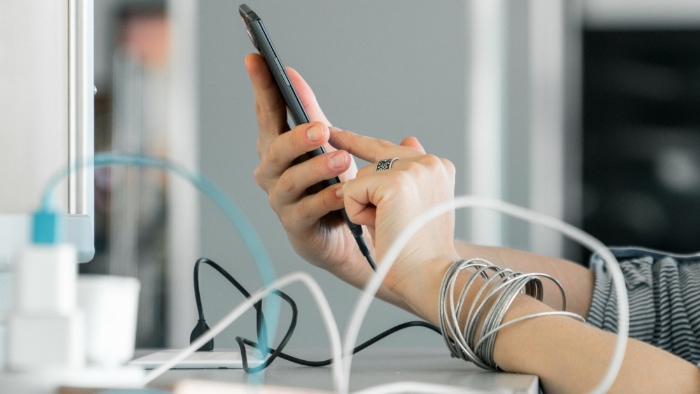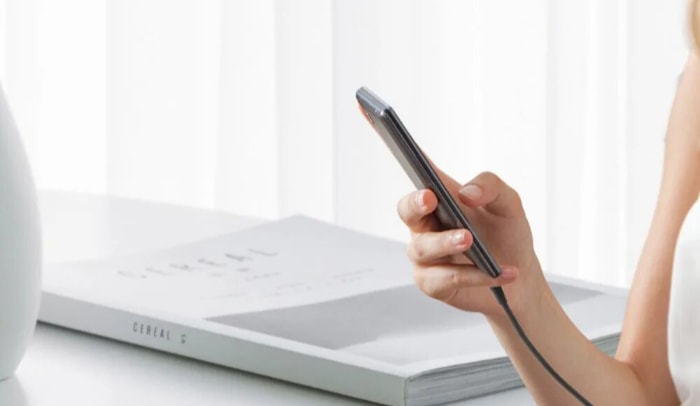Is It Bad to Use Your Phone While Charging? Myth vs. Reality

Many of us are guilty of it—scrolling through social media, answering emails, or even playing games on our smartphones while they’re plugged into the charger. It’s a habit that seamlessly integrates into our multitasking lives, but it also raises questions about its long-term implications.
Is this practice safe for the device, and more importantly, for the user? Contradictory opinions and myths circulate the internet, making it crucial to discern fact from fiction.
The Mechanics of Phone Charging
The way your smartphone charges might seem straightforward, but the underlying process involves intricate electrical and chemical reactions. Grasping these mechanics can help you make informed decisions about your phone’s charging habits.
The Role of Lithium-Ion Batteries
Modern smartphones predominantly use lithium-ion batteries, known for their high energy density and long life span. These batteries have two electrodes—an anode and a cathode—separated by a liquid electrolyte.
When the phone is charging, lithium ions move from the cathode to the anode through the electrolyte, storing energy in the process.
The Charging Cycle
The term ‘charging cycle’ refers to the process of charging a battery from 0% to 100% and then discharging it back to 0%. However, you don’t have to complete a full charging cycle each time you plug in your phone.
Lithium-ion batteries prefer partial cycles, as it is generally better for their long-term health to keep them between 20% and 80% charged.
Voltage and Current Explained
Voltage and current are two essential parameters in the charging process. Voltage is like the pressure that pushes the electric charge into the battery, while current represents the flow rate of that charge.
Higher voltage and current can charge a phone more quickly but may generate more heat, which could potentially affect battery life.
Modern Charging Controllers
Smartphones come equipped with advanced charging controllers that regulate voltage and current to maximize efficiency and safety. These controllers are designed to switch to a ‘trickle charge’ mode once the battery reaches a high level of charge, reducing the flow of electricity to maintain the battery at 100% without overcharging it.
The Importance of Quality Charging Equipment
The charger and cable you use can significantly affect the charging process. Using low-quality or incompatible chargers can result in inadequate voltage regulation, which could be detrimental to your battery’s longevity and might even pose safety risks.
The Myth of “Overcharging”
One of the most widespread beliefs about using a phone while charging is the risk of overcharging the battery. This myth persists despite advances in battery technology and charging systems.
To set the record straight, let’s break down the facts and misconceptions about overcharging your smartphone.
The Origins of the Overcharging Myth
The belief that batteries can be overcharged traces its roots back to older battery technologies like Nickel-Cadmium and Nickel-Metal Hydride. These older batteries were prone to the “memory effect,” where they would lose their maximum energy capacity if they were repeatedly charged before being fully discharged.
This is not the case with modern lithium-ion batteries.
Role of Modern Charging Controllers
In today’s smartphones, sophisticated charging controllers manage the charging process to prevent overcharging effectively. Once the battery reaches near-full capacity, these controllers reduce the charging speed or switch to maintenance mode, keeping the battery at full charge without pushing additional current into it.
Monitoring Battery Levels
Your smartphone is smarter than you may give it credit for. The operating system and associated firmware closely monitor battery levels and adjust charging behavior accordingly.
When the battery reaches 100% charge, the system stops drawing power from the charger, thereby eliminating the risk of overcharging.
Battery Health Features
Many recent smartphones come with features that help maintain battery health over time. These may include optimized battery charging settings that slow down the rate of battery aging by learning your daily charging patterns and adapting the charging process accordingly.
Heat Generation During Charging

While the fear of overcharging may be largely dispelled, the issue of heat generation during charging is a concern worth addressing. Heat can impact both the immediate safety and long-term health of your phone’s battery.
Let’s investigate how heat is produced during charging and why it matters.
The Source of Heat
Electrical resistance in the battery and other phone components generates heat as current flows during the charging process. This heat is usually manageable, but when you use your phone while it’s charging, additional processes add to the thermal load.
Activities like streaming video or running resource-intensive apps can cause the phone to heat up more than usual.
Why Heat is a Concern
Excessive heat can accelerate the deterioration of lithium-ion batteries. High temperatures can cause the liquid electrolyte in the battery to break down, compromising its ability to hold a charge.
Over time, this can lead to reduced battery capacity or, in extreme cases, swelling and leakage.
Mitigating Heat Production
There are ways to minimize heat production while charging. One effective method is to remove the phone case, which can trap heat. Another option is to place the phone on a cool surface, ensuring better heat dissipation.
Additionally, avoid using resource-intensive apps or features like GPS, video streaming, or gaming while the phone is charging.
Software Features to Combat Heat
Many smartphones now include thermal management features within their operating systems. These features are designed to monitor the temperature and adjust system performance to prevent overheating.
Some phones will even display a warning message and temporarily disable certain functions if they detect excessive heat.
The Software Perspective
While hardware components like the battery and charging controller play critical roles, software also has a significant impact on the charging process. From monitoring battery health to regulating performance, your phone’s operating system takes several steps to ensure that you can use your phone while charging without severe repercussions.
Role of the Operating System
Modern smartphone operating systems are adept at managing battery health and charging efficiency. They monitor battery levels, control power distribution among apps and processes, and execute various routines to optimize charging.
This contributes to both the safety and longevity of your device.
Battery Management Algorithms
At the core of the software’s role in charging are complex battery management algorithms. These algorithms determine when to fast-charge the battery, when to slow down the charging process, and when to stop charging altogether.
These decisions are made based on various factors like battery health, temperature, and even user behavior.
Smart Charging Features
Some newer smartphones come with what is often referred to as “smart charging” or “adaptive charging” features. These features learn your daily charging routine and adapt the charging process to slow down battery degradation.
For example, if you typically charge your phone overnight, the feature may keep your battery at around 80% for most of the night, only completing the charge close to your waking time.
Notifications and Warnings
Another software utility aimed at protecting your battery is the notification system. If your phone’s operating system detects risky behavior, such as excessive heat or the use of an incompatible charger, it may display warning notifications.
Some phones can also show you detailed battery usage statistics, which can be valuable for monitoring your charging habits.
Updates and Battery Health
Operating system updates often include improvements in battery management algorithms. These updates may introduce new features or optimizations designed to prolong battery life and improve charging safety.
It’s a good practice to keep your phone updated to benefit from these advancements.
Best Practices for Safe and Efficient Charging
Now that we’ve demystified the technical aspects and dispelled common myths, it’s time to consolidate this knowledge into actionable guidelines. Following best practices for charging can extend your phone’s battery life, optimize its performance, and enhance safety.
Use Official or High-Quality Third-Party Chargers
Not all chargers are created equal. Using an official charger from your phone’s manufacturer or a high-quality third-party charger ensures better voltage regulation and safety features.
This is crucial for both the longevity of your battery and your own safety.
Keep an Eye on Temperature
Be mindful of your phone’s temperature while it’s charging. If it feels hot to the touch, it might be wise to unplug it and let it cool down.
Additionally, remove any phone cases that could trap heat, and consider placing your phone on a cool, flat surface to aid heat dissipation.
Partial Charging is Generally Better
As mentioned earlier, lithium-ion batteries prefer partial charge cycles. Try to keep your phone’s battery level between 20% and 80% for optimal long-term health.
If you’re planning to store your phone for an extended period, aim for a 50% charge to minimize capacity loss over time.
Limit High-Power Usage While Charging
Using high-power apps like video streaming services, games, or GPS can cause your phone to heat up excessively while charging. If you need to use your phone while it charges, stick to less resource-intensive tasks like texting or making calls.
Stay Updated
Always ensure that your phone’s software is up to date. Manufacturers regularly release updates that can improve battery management, charging efficiency, and overall system stability. These updates may include optimizations that make charging safer and more efficient.
Conclusion
Charging your smartphone while using it has long been a subject of debate and misconception. Through a comprehensive look at the mechanics of phone charging, the myth of overcharging, the impact of heat generation, software contributions, and best practices for safe and efficient charging, we’ve dispelled some common myths and offered practical advice.
Advances in both hardware and software have made it generally safe to use your phone while it charges, but taking additional precautions can optimize battery health and safety. Keeping abreast of these technological developments and guidelines will enable you to maximize your smartphone’s longevity and performance.



